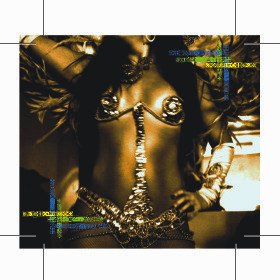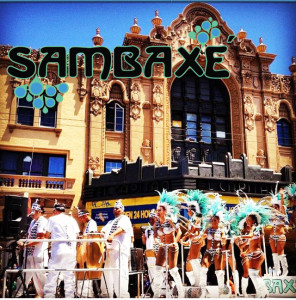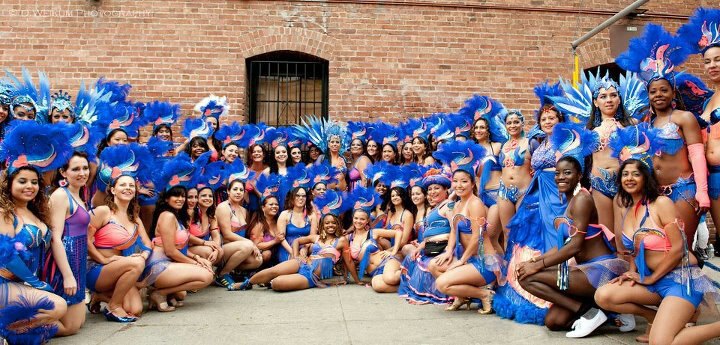FACETED SEQUINS glimmering in the light, beads feverishly shaking, infectious mechanical rhythms keeping time, deep pounding heart beats, glistening bronzed skin. Thousands of synchronized arms and legs moving in unison. Dizzying bodies spinning in what seems like never ending eternal circles. A stream of moving platforms transformed into jungles, beaches and mystical landscapes. Doctors, house-keepers, students, movie-star actors, all clad with brightly hued feathers. An intangible communal energy filled with releasing spirit, celebrating life, and being present. This is Carnaval. Carnaval is a lover that welcomed me with open arms.

Carnaval embodies an incredible phenomenon in which social, class, and economic borders are all obliterated. Traditionally, Carnaval has inverted normal class relations: the ‘pavao’ (popular culture) becomes “king of the city” for the duration of the celebration. During this world-famous, celebratory week in Brazil, it is one of the only times where one can witness a true integration of people regardless of socio-economic status, gender, age, religion and sexual orientation. This care-free moment is what makes the celebration of Carnaval so beautiful and almost utopian.
The history of Carnaval is complex with dates and origin stories often debated. Carnaval is a Pre-Lenten celebration and is observed throughout the world from Mardi Gras in New Orleans to Diablada de la Quebrada de Humahuaca in Argentina which combines traditional indigenous celebrations mixed with Catholic elements. The observance of Carnaval began, according to many historians, in Italy as a celebration held by Catholics, before Ash Wednesday, the first day of Lent, a six-week period of fasting and abstinence that ends at Easter. Eating meat was prohibited during Lent, and the Latin origin of the word “carnival” comes from that feature: either carne levare meaning “to remove meat”; or carne vale or “farewell to meat.”
The Catholic Portuguese settlers brought this celebration to Rio de Janeiro, Brazil. The first recorded Carnaval in Rio took place during the 17th or 18th century. During the 19th century, different groups began to add to the celebrations in Rio. Some of these were “Grandes Sociedades” (Great Societies) which were luxurious parades held by aristocrats, and “Ranchos Carnavalescos,” which were organized working-class parades. There were also “Cordões” which were less Justice Reclamation Accountability organized groups of lower-class masked and costumed parading revelers.

Over time, though, some of these blocos, or street groups, wanted to become more organized. It was then that the Escolas de Samba (Samba Schools) were born. Samba schools were founded as and still are social clubs that have a strong community purpose and are traditionally associated with a certain neighborhood, often times in informal settlements called favelas. They are at the epicenter of Carnaval culture. Much more than just music and dance groups, they are in fact, neighborhood associations that provide a variety of community needs (such as employment, educational and health care resources) in many parts of the informal city or shanty-towns. They operate as an informal government that provides social services. Planning and preparation for Carnaval happens all year long and is a shared creative practice.
Decades later, the first Carnaval Parade in San Francisco took place in the Mission District in 1979, starting at Precita Park, then moving to Dolores Park the subsequent year and in 1983, the Bryant and 24th Street parade route through the Mission was established. The San Francisco parade structure, including the competitive aspect, were all modeled after the Carnaval Parade in Rio de Janeiro, with several parade contingents from different Latin American and Caribbean music and dance traditions acting much like Brazilian samba schools; organizing themselves, feverously working creatively together for months to put on their show in hopes of becoming 1st place champions.
This collective creative practice that incorporates both visual and performance art is why I fell in love with Carnaval. Not only does it resonate with my roots as a first generation daughter of immigrant parents, but it also taps into both my visual and performing art sides. I often find it challenging to find projects that incorporate both of my art worlds. As an architect and dancer, I appreciate and enjoy delving into all aspects of producing the one-day performance art piece.
Coming from a diverse immigrant background, I spent much of my youth trying to seek out cultural activities that I could connect to and partake in. I began to become aware at a young age, of the yearning desire to be creative and the necessity to express myself artistically. And then I found Carnaval, with its provocative and contagious energy, and I was hooked. Carnaval was the impetus that propelled me into the dance world. It gave me the “ganas” or courage to become a samba dancer and later on, much to my own surprise, a samba dance instructor. Carnaval initially provided me the space to explore dance as a teen and learn more about myself as a young woman, an aspiring dancer and as a builder and architect.

Participating as a dancer in the San Francisco Carnaval Parade for the last 17 years (10 years producing my own contingent) has provided me an outlet to continue both my visual and performing art practices and be able to marry the two while producing each year’s production. It feeds my internal need to be a community builder and to be a carrier of cultural traditions. Listening to my parents’ stories of immigrating to this country from completely different parts of the world and learning about their experiences, memories and perspectives, instilled in me the importance of keeping cultural traditions alive no matter where one settles. Carnaval is a cultural tradition that is welcoming to everyone and has imbedded qualities that naturally brings people together through the creation of art and performance. For this reason, Carnaval is a tradition that I have committed myself to carry forward.
The desirable all-inclusive, non-discriminatory nature of Carnaval brings up an interesting question for a professional dancer and choreographer. What are the implications for a professional dancer/choreographer to be all-accepting and work with non-dancers to get them ready to perform on the “Mission Street” stage? Once again, Carnaval comes to the rescue, galloping in adorned with feathers and shining sequins, to break down barriers and flip the dynamic between the professional and the non-professional, the formal and the informal, and unapologetically allow anyone to become a dancer on a stage in front of a live audience for a moment in time. Carnaval allows us to put hierarchy and status aside and as a result, levels the dancing field for everyone.
Possessing community building as one of its most attractive features, Carnaval has fostered an amazing community of women and men of all ages, sizes, shapes, socio-economic and ethnic backgrounds. It has brought all of these people together through the collective experience of creating movement and sound together by using one’s bodies as well as collectively experiencing all the trials and errors that come along with the artistic process. It allows this community to share in the endorphin induced high of giving every last drop of sweat to a performance. It encourages one to be the best performer that one can be in order to provide an amazing spectator experience. My love affair with Carnaval has brought me an incredible amount of joy (including a few tears) and most importantly, it has brought me to my husband and partner in art. For this reason and all the previously mentioned reasons, I love Carnaval and am thankful to have experienced its warm embrace.
This article appeared in the May 2015 issue of In Dance.


